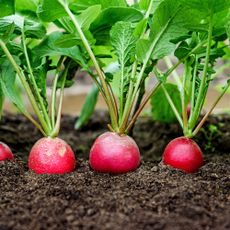Pea Root Nematodes: Recognizing And Managing Nematodes Of Peas


Peas with root nematodes may be stunted, wilted, and yellow and may produce a smaller harvest. Nematodes can be difficult to combat, so prevention is the best option. Use nematode-free plants or resistant varieties of peas in your garden to avoid these pests.
Pea Root Nematodes
Nematodes are microscopic worms that infest the roots of plants. There are many different species that attack different types of plants and that cause varying degrees of damage. Nematodes complete most of their life cycle in roots of plants and survive in the soil as eggs ready to hatch the next year.
Common Pea Nematodes
There are a few nematodes of peas that are most common in gardens, and they all have the potential to cause a lot of damage. They harm the roots, which in turn prevents the plants from being able to take up adequate amounts of water or nutrients. Three common nematodes that affect peas are:
- Root knot nematode. This nematode causes galls on the roots of pea plants, yellowing leaves, wilting, and lack of vigor, but there are varieties available that are resistant.
- Root lesion nematode. When infected with this type of nematode, a pea plant will have one primary root and no smaller, secondary roots. The plants may also have yellow leaves and stunted growth.
- Pea cyst nematode. Pea plants with a cyst nematode develop yellow leaves. Yellowish cysts form on the roots and the roots lack the nitrogen-fixing nodules they normally have.
Managing Nematodes in the Garden
Nematodes can be tricky, and how you manage them may depend on the type. For example, with the cyst nematodes, you can rotate out peas with a plant not susceptible to infection. This doesn’t work with root knot nematodes, though, mostly because there are so many host plants for root knot, including weeds. Some steps you can take with any type of nematode is to ensure that your pea plants have the best possible conditions to grow. This makes them less susceptible to infection and better able to get adequate water and nutrients. Amend the soil, use fertilizers, and water adequately. Prevention is also a good strategy for any type of nematode. Start your garden with plants guaranteed to be nematode-free, which you can find at a quality nursery. You can also use varieties that resist nematode infection. Prevent the spread of nematodes by practicing good garden hygiene, not moving infested plants, and destroying those that are badly infested.
Gardening tips, videos, info and more delivered right to your inbox!
Sign up for the Gardening Know How newsletter today and receive a free copy of our e-book "How to Grow Delicious Tomatoes".

Mary Ellen Ellis has been gardening for over 20 years. With degrees in Chemistry and Biology, Mary Ellen's specialties are flowers, native plants, and herbs.
-
 Never Use Homemade Compost Until It Passes This Simple Radish Test
Never Use Homemade Compost Until It Passes This Simple Radish TestThe radish test is a foolproof trick for knowing whether your homemade compost is ready for planting – or if it could harm the health of your plants.
By Mary Ellen Ellis
-
 Best Trees For Containers: Create A Potted Grove On Your Porch With These 8 Compact Varieties
Best Trees For Containers: Create A Potted Grove On Your Porch With These 8 Compact VarietiesWe may not always think of trees as being obvious candidates for pots, but there are a few that not only thrive but flourish. Here are some of the best trees for containers
By Teo Spengler